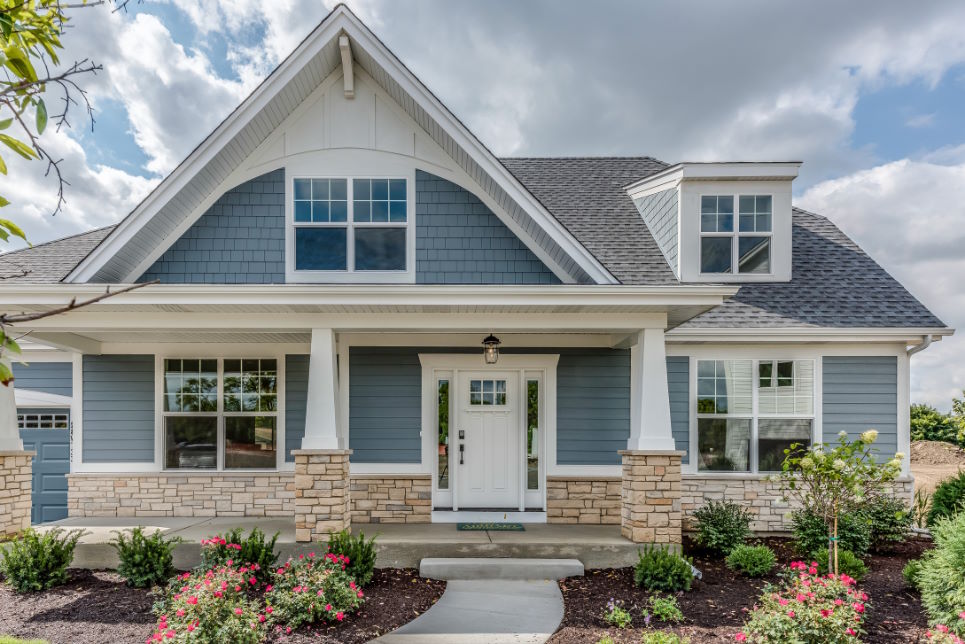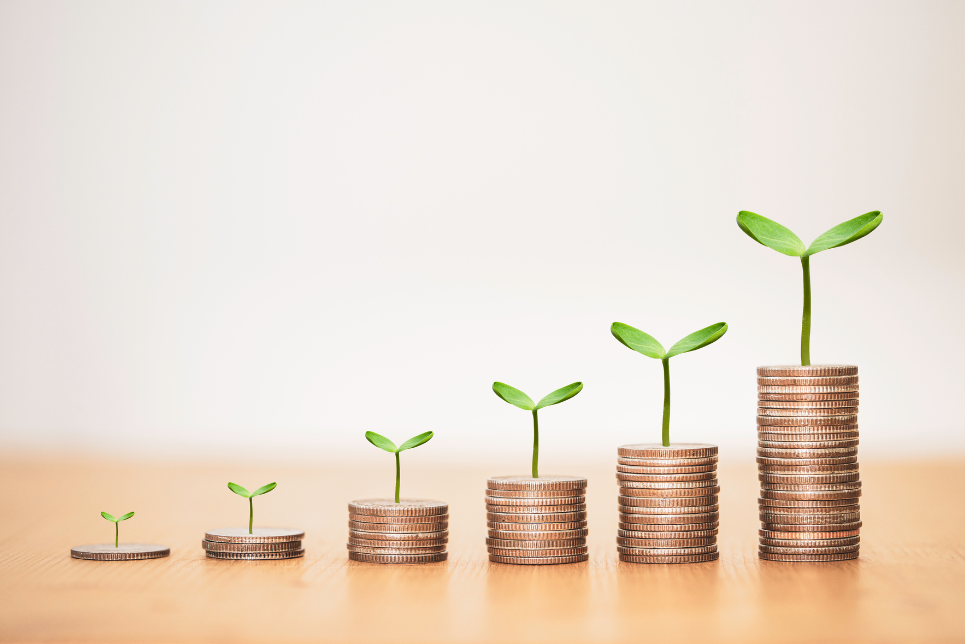First Home Savings Account Explained

How to Save for Your First Home with the FHSA
Buying your first home is a big milestone, but it can also be a daunting challenge. Saving up for a down payment, finding a suitable property, and securing a mortgage are all hurdles that many Canadians face. On April 1, 2023, the federal government introduced a new tool to help prospective first-time home buyers achieve their dream: the First Home Savings Account (FHSA)1.
The FHSA is a registered savings account that allows you to save up to $40,000 tax-free for your first home purchase. You can open a FHSA and contribute up to $8,000 per year, with unused contribution room carrying forward. You can withdraw from your FHSA at any time to buy a qualifying home, as long as you meet the eligibility criteria. You can also use your FHSA in conjunction with the Home Buyers’ Plan2 (HBP), which lets you borrow up to $60,000 from your Registered Retirement Savings Plan3 (RRSP) for a down payment.

How does the FHSA work?
The FHSA is similar to a Tax-Free Savings Account4 (TFSA) in some ways, but it has some unique features and rules. Here are the main points you need to know:
- You can open an FHSA with any financial institution that offers it, such as a Portfolio Manager, bank, or a credit union. You can have more than one FHSA, but the total contribution limit applies across all your accounts.
- You can contribute up to $8,000 per year to your FHSA, up to a lifetime limit of $40,000. If you don’t use up your annual limit, you can carry it forward to future years. For example, if you contribute $5,000 in 2024, you can contribute $11,000 in 2025 ($8,000 + $3,000).
- You can deduct your FHSA contributions from your taxable income, which means you will pay less tax and have more money to save. However, unlike RRSPs, FHSA contributions made during the first 60 days of the calendar year are not deductible for the previous year. For example, if you contribute $8,000 to your FHSA in January 2025, you can deduct it from your 2025 income, not your 2024 income.
- You can invest your FHSA money in various types of assets, such as pooled/portfolio assets, REITs, stocks, bonds, mutual funds, ETFs, GICs, etc. The income and growth from your investments are tax-free, which means you can compound your savings faster. However, you should be aware of the risks associated with different investment options and choose the ones that suit your risk tolerance and time horizon.
- If you withdraw for a reason other than buying a qualifying home, the withdrawal is taxable, and you will lose your contribution room permanently. For example, if you withdraw $10,000 from your FHSA to pay for a vacation, this $10,000 is added to your personal income and you will not be able to recontribute that amount in the future.
- You can use your FHSA to buy a qualifying home, which is a home that you intend to occupy as your principal residence within one year of buying it. The home must be located in Canada and can be new or existing, detached or attached, single or multi-unit. You can also use your FHSA to buy a share of a home, such as a cooperative housing unit or a fractional ownership property.
- You must meet the eligibility criteria to use your FHSA for a home purchase. You must be a first-time home buyer, which means you have never owned a home before, or you have not owned a home in the past four years. You must also have a written agreement to buy or build a qualifying home, and you must complete the transaction within 15 years of opening your FHSA. You can use your FHSA to buy a home with a spouse, a common-law partner, or a friend, as long as they also meet the eligibility criteria.
- You can use your FHSA in conjunction with the HBP, which allows you to borrow up to $60,000 from your RRSP for a down payment. However, you must repay your HBP withdrawals to your RRSP over 15 years, or else they will be added to your taxable income. You do not need to repay your FHSA withdrawals, as they are tax-free.
What are the benefits of the FHSA?
The FHSA offers several advantages for first-time home buyers, such as:
- It helps you save more money for a down payment, which can reduce your mortgage amount and interest payments, and increase your home equity.
- It lowers your tax bill, as you can deduct your contributions from your income and enjoy tax-free growth on your investments.
- It gives you flexibility, as you can choose how much, how often, and where to contribute, invest, and withdraw from your FHSA.
- It complements other programs, such as the HBP, the First-Time Home Buyer Incentive, and the GST/HST New Housing Rebate, that can help you afford your first home.

How can you maximize the potential of the FHSA?
The FHSA is a valuable tool, but it is not a magic bullet. You still need to plan ahead, budget wisely, and invest smartly to make the most of it. Here are some tips to help you optimize your FHSA:
- Start saving early, as the sooner you open and contribute to your FHSA, the more time you have to benefit from the tax deduction and the tax-free growth. You can also take advantage of the power of compounding, which means your money will grow faster over time.
- Save regularly, as the more you contribute to your FHSA, the more you can save for your down payment and reduce your tax bill. You can set up automatic transfers from your bank account to your FHSA.
- Invest wisely, as the more you earn on your FHSA investments, the more you can boost your savings. You should choose an investment strategy that matches your risk tolerance and time horizon. You should diversify your portfolio across different asset classes. You should also review your investments periodically and rebalance your portfolio as needed.
- Withdraw strategically, as the timing and amount of your FHSA withdrawals can affect your home purchase and your future savings. You should withdraw from your FHSA only when you are ready to buy a qualifying home.
Conclusion
The FHSA can help Canadians save for their first home. It offers tax benefits, flexibility, and compatibility with other programs that can make home ownership more accessible and affordable. However, it also has some limitations and challenges that require careful planning and management. By following the tips above and speaking to a qualified financial professional, you can maximize the potential of your FHSA and achieve your dream of owning your first home. Below, you will also find a comparison between the First Home Savings Account (FHSA), Registered Retirement Savings Plan (RRSP), and Tax-free Savings Account (TFSA).
Sincerely,
Aaron Robertson, CIM®, CFP®
Portfolio Manager & Head of Private Client
Comparison between FHSA, RRSP and TFSA
What kind of savings account is it?
FHSA
- Home savings account
RRSP
- Retirement savings account
TFSA
- Savings account
Do I qualify to open an account?
FHSA
- Have not owned a home in the preceding four calendar years
- Be 18 years or older
- Canadian resident
RRSP
- Have an income
- Be 71 years old or younger
- Canadian resident
TFSA
- Have a valid SIN
- Be 18 years or older
What types of investments can I hold in this account?
FHSA, RRSP & TFSA
- GICs
- Mutual Funds
- Savings deposits
- Stocks, bonds, ETFs, alternative assets such as real estate and mortgages (as part of Alitis Investment Funds)
- Cash
How does tax affect contributions?
FHSA
- Tax deductible amount
RRSP
- Tax deductible to a certain limit
TFSA
- Does not provide a tax deduction
How does tax affect withdrawals?
FHSA
- Money won’t be taxed if withdrawn to purchase a qualifying home
- Tax-free income
RRSP
- Money won’t be taxed until it is withdrawn
- Tax-deferred income
TFSA
- Money won’t be taxed when withdrawn
- Tax-free income
When can I withdrawal my money?
FHSA
- You are qualified to make a tax-free withdrawal if you’ve already signed a contract to purchase a house
- Residing in the house you made a withdrawal for within a year of purchasing or constructing the house
RRSP
- You can make withdrawals anytime however, they are taxable and withdraw rules vary depending on type of account and legislation
- As part of the Home Buyers Plan (HBP), you can withdraw up to $35,000 from your RRSP to use towards the purchase of a qualifying home
TFSA
- You can withdraw funds from your TFSA at any time without incurring taxes or penalties
- The withdrawn amount is also added back to your contribution room the following year
How much can I contribute?
FHSA
- Can make contributions of $8,000 annually up to a lifetime total of $40,000
RRSP
- 2024 RRSP limit is 18% of your 2023 “Earned Income” to a maximum of $31,560 (plus unused amounts from prior years)
TFSA
- Contribution amount changes yearly and your TFSA contribution room grows each year
- 2024 contribution limit was $7,000 with the total limit of $95,000
How long can I keep the account open?
FHSA
- Ends on the earliest of these events: the 15th anniversary of having the account opened, the year you turn 71 or the year after you make your first qualifying withdrawal from the account
RRSP
- You must convert a RRSP to a RRIF by December 31 of the year that you turn 71
TFSA
- You may keep your TFSA open as long as you live
Disclaimers and Disclosures
- First Home Savings Account (FHSA).” Canada.ca, Government of Canada, 18 January 2024, www.canada.ca/en/revenue-agency/services/tax/individuals/topics/first-home-savings-account.html.
- What Is the Home Buyers’ Plan (HBP)?” Canada.ca, Government of Canada, 08 November 2024, www.canada.ca/en/revenue-agency/services/tax/individuals/topics/rrsps-related-plans/what-home-buyers-plan.html.
- Registered Retirement Savings Plan (RRSP).” Canada.ca, Government of Canada, 02 January 2025, www.canada.ca/en/revenue-agency/services/tax/individuals/topics/rrsps-related-plans/registered-retirement-savings-plan-rrsp.html.
- Tax-Free Savings Account (TFSA), Guide for Individuals.” Canada.ca, Government of Canada, 17 January 2024, www.canada.ca/en/revenue-agency/services/forms-publications/publications/rc4466/tax-free-savings-account-tfsa-guide-individuals.html.


